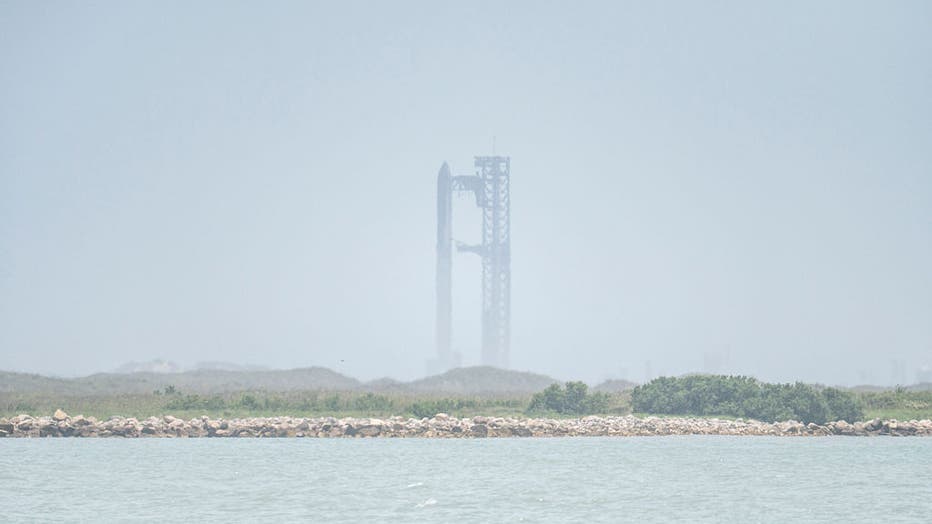SpaceX Starship launch: What went wrong and what’s next for moon and Mars plans

WATCH FULL: SpaceX Starship #9 launch
SpaceX launched a ninth uncrewed test flight of Starship from Starbase, Texas on Tuesday.
After two explosive failures earlier this year, SpaceX made progress Tuesday with its latest Starship test flight — even as the mission failed to complete a satellite deployment demonstration.
The 403-foot rocket, the largest and most powerful ever built, lifted off from Starbase in South Texas. The company hoped the upper stage would travel halfway around the world before splashing down in the Indian Ocean. That goal was partially met, but a door designed to release eight mock Starlink satellites failed to open properly, preventing their deployment.

The SpaceX Starship rocket stands on the launchpad ahead of its scheduled launch from Starbase as seen from South Padre Island, Texas on May 27, 2025. (Photo by SERGIO FLORES/AFP via Getty Images)
This marked the first time a reused booster was used in a Starship flight. Unlike earlier launches, SpaceX did not attempt to recover the booster with its "chopsticks" system and instead allowed it to crash into the Gulf of Mexico.
Why this test still mattered
Big picture view:
Despite the failed satellite test, the flight advanced SpaceX’s testing goals:
- The rocket flew farther than any previous demo, marking an improvement over earlier attempts that ended minutes after launch.
- SpaceX tested upgraded thermal tiles and a new catch mechanism for future Starship recovery.
- It was also the first time SpaceX operated a Starship with both recycled parts and updated structural modifications.
The Federal Aviation Administration had approved the launch with expanded hazard areas and off-peak timing to avoid air traffic disruptions, which plagued earlier flights.
What's next:
NASA has major plans riding on the success of Starship. It is slated to be the landing vehicle for the Artemis moon missions — with a crewed orbit scheduled for 2026 and a lunar landing planned for no earlier than 2027.
SpaceX will need to demonstrate both safe crew transport and precise landings on future flights. The latest mission was a step forward, but engineers still have hurdles to overcome.
The Source: This story is based on Associated Press reporting and public statements from SpaceX and FAA officials. It was reported from Los Angeles.

